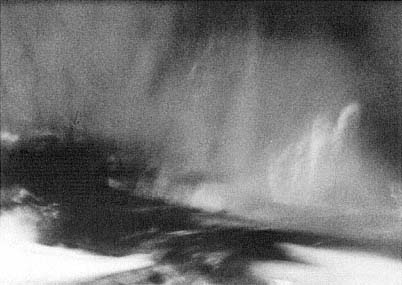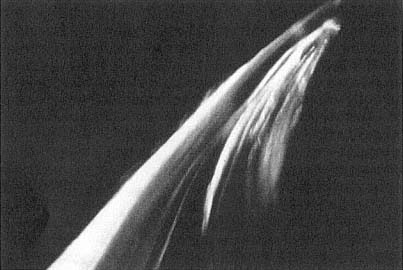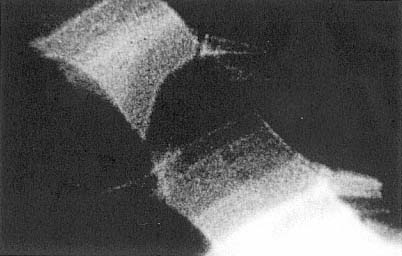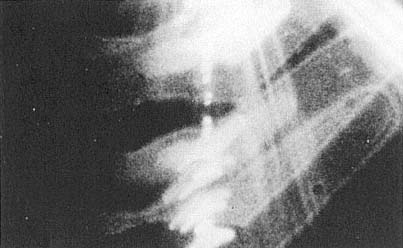5—
Whether the seeing comes from "inside" or "outside," its "medium" is light. Therefore, in "giving sight to the medium" of film, Brakhage works on the assumption that "what movie is at basis is the movement of light." As the moving light takes shape, it produces "what are called recognizable objects," after which "drama begins to come in, or story, or picture," but the basis, Brakhage insists, is always "the movement of light."[65]
In addition to its physiological, psychological, and cinematic significance, light has a metaphysical dimension in Brakhage's visual aesthetics. He frequently draws attention to Ezra Pound's translation of "Omnia quae sunt, lumina sunt"—"All things that are are lights" (Canto LXXIV )—from the writings of the ninth-century philosopher and theologian Johannes Scotus Erigena, and he often refers to the later school of English "light philosophers," in particular to Bishop Robert Grosseteste, whose treatise De Luce was an important source for Pound's—and hence Brakhage's—ideas about light. Drawing upon Neoplatonic thought, Grosseteste proposed that the whole universe derives from light. God is light in its purest and most immaterial form, and the visible world of things is light's outermost extension, where it takes on a material appearance or becomes most completely "corporeal," in Grosseteste's terms.
Erigena's statement "All things that are are lights," expresses what Brakhage has long believed to be "the natural condition of the film maker at the moment of making."[66] In cinema "all things that are" quite literally are lights moving in time; therefore Brakhage had at his disposal the ideal medium for conveying the luminosity he perceived in the world around him—except that when "drama begins to come in, or story, or picture," viewers tend to forget about the basis of it all in "the movement of light." The challenge for Brakhage was to make light itself the film's subject, to preserve its luminosity without reducing it to purely abstract shapes.
In many of Brakhage's films, techniques such as extreme soft-focus, over and underexposure, flicker effects, negative and solarized images, flared frames, clear leader, and refractions of light in the lens have produced intermittent glimpses of light as a meaningful subject in its own
right. But with The Text of Light (1974), the two series of short films with roman and arabic numerals as titles (1979–82), The Egyptian Series (1984), and most recently The Babylon Series (1989–90), Brakhage has produced an impressive body of work with light as its overt and continuous subject. Although they are the films in Brakhage's oeuvre most likely to be labeled "abstract," they are more profitably viewed as concrete, literal documentaries of the physical and metaphysical light invoked by Erigena and Grosseteste.
Brakhage's comments at the time of making The Text of Light stress the film's equivalence with actual—if rare and hard to describe—perceptions of light:
I see light behaving in all kinds of ways that [are not] photographable with given means—that is, the given lenses and film stocks and so on. And most people don't see these things, although I've met some people who have seen them.
That light travels over the ground, that it pools—that there is a pool of luminescence which is very ephemeral, and which takes a relaxing of Western muscles in the eyes in order to be aware of. That light-streaks come down previous to rain—splitting the air—light-like phosphorescent streaks of . . . something! That I call light!
Also that where, in the Spring, before the grasses grow up and around these pools of light, there are up-shoots; it seems to be light shooting up, that shapes plant-like things, and then later plants come up there.[67]
In The Text of Light light does flow, pool, fall in streaks, shoot upwards, and take on innumerable forms in an ambiguous space that sometimes seems open to infinity and other times appears as flat as the screen itself. Some viewers see landscapes, cities, forests, oceans, sunsets, faces, and myriad living forms; others see chiefly light, color, texture, and rhythmical movement. A combination of both ways of seeing the film would probably be truest to what Brakhage calls the "primary impulses" of the film: Erigena's "All things that are are lights" and Blake's "To see a world in a grain of sand."[68]
Brakhage found visual equivalents of these "primary impulses" in sunlight refracted by a crystal ashtray and filmed with a macro lens held so close to the glass that it is impossible for the viewer to know how the images were created. By shooting one frame at a time as the light changed with the sun's movements, and by moving the camera very slightly between each exposure, Brakhage imparted to the camera's eye the minute shifts and tremors of a living eye and transferred that life to the images on the screen. Moreover, the glass itself gives the light a certain density or

Hints of a misty landscape in The Text of Light .

Light streaks downward through the darkness in The Text of Light .
"materiality," like that of physical objects. The light seems to take on the shapes, textures, movements, even the three-dimensionality, of things; yet, things in the film look like light. It is as if Brakhage were documenting the instant at which light achieves "corporeality" (in Grosseteste's terminology) but before its "glow" is extinguished in corporeal forms.
Because of these intimations of physical-spiritual relationships embodied in light, the film moves into what Brakhage calls Jordan Belson's "territory." What it means to enter that territory will be discussed in chapter 6, but it is worth noting now that as Brakhage worked on this film he carried on "a friendly argument in [his] mind with Jordan Belson":
He would say, O wonderful what it is, but why is it jerky? Or why not centered? Or, you know . . ., and to hold myself together I would say, No, Jordan, it has to be this way. So I, I owe him very much. He sustained me in that way a beautiful argument can, because it was very much in his territory. I mean this film is very much on his side of the street.[69]
So it is, but its way of conveying the perception of light is uniquely Brakhage's. The "jerky," off-centered images are not simply aesthetic preferences. They assert the physical presence of the eye/machine in even the most metaphysical contemplation of light. When Brakhage says it requires "a relaxing of Western muscles in the eyes" in order to see certain luminescences in nature, he is not implying an escape from the physiology of vision into some dreamy, other-worldly transcendentalism. He is alluding in yet another way to "the untutored eye" and to breaking "the associational chain" that prevents us from seeing all that is available to be seen in this world.
The roman and arabic numeral films also occupy Belson's "side of the street." Introducing film I , Brakhage writes:
This begins a new series of films which ordinarily would be called "abstract," "non-objective," "non-representational," etc. I cannot tolerate any of those terms and, in fact, had to struggle against all such historical concepts to proceed with my work.[70]
Instead, he coined the term "imagnostic," to suggest a combination of image and knowledge. "Image birth is the heart of the matter for me," he told an audience at the first screening of films I, II , and III . "But that isn't sufficient," he continued. "Imago means so much more than image. Gnostic carries so much more than knowing; it carries it for example in the Biblical sense of knowing and birth."[71]
Presumably, Brakhage does not object to terms like "abstract" and "non-objective" because they imply images that are not "referential" (Brakhage's

"Imagnostic" imagery in III of the Roman Numeral Series .

An image from the brain's "tree-of-nerves" in 14 of the Arabic Numeral Series .
term), but because they fail to convey the intensity and physicality of "image birth." They also fail to specify the crucial contribution of the cinematic apparatus itself. These images were never seen, Brakhage says, "except in their making." Pursuing this line of argument, Brakhage explains:
I'm trying to find a place in the mind that is beyond picture or other than picture . . . some area that isn't drawing at least in any easy or recognizable sense on pictures or combinations of pictures, so that something new can be born.[72]
Although Brakhage soon dropped the term "imagnostic," he continued to draw upon sources "beyond picture" as he completed the roman numeral series and then went on to the arabic numeral films, The Egyptian Series , and The Babylon Series . Working with very soft focus, extreme close-ups or macrophotography, and innumerable unidentifiable lights and reflections, Brakhage produces a world of diffuse, mysterious shapes; misty glowing colors; piercing glints of light; and nearly total exclusion of "referential" shapes. Except for recurrent hints of light refracted through a camera lens—quivering, elongated diamonds, materializing and evaporating, hovering and sliding in and out of the frame—there is little to connect the imagery of the films to anything outside the creative meeting of the mind and the camera-eye.
Even so, despite the emphasis of these films on "mind's moving-visual-thinking," Brakhage does not forget the physiological basis of these mental processes. His persistent emphasis on trembling microrhythms and swift, dynamic juxtapositions of images (characteristic of his work as a whole) produces metaphors of the energy underlying thought's images, the electrical impulses that Brakhage envisions surging through the brain's "tree-of-nerves," as he puts it in a comment on the arabic numeral films.[73] By documenting the birth of images in the mind, Brakhage took another step along the "track of the evolution of SIGHT" he followed in making Scenes From Under Childhood .
In fact, from the moment he decided to "accept [his] own seeing" in Desistfilm , Brakhage committed himself to following that track—wherever it might lead. From open-eyed engagement with the light of the world; to closed-eye visions of dots, sparks, grainy fields of light, and hypnagogic images; to intimations of the electrical patterns of thought itself—Brakhage has pursued the implications of that early, crucial decision. In the process, he has remained true to "Sense as Muse" by gathering light and giving it forms that communicate with other "optical minds" and their own "moving-visual-thinking."